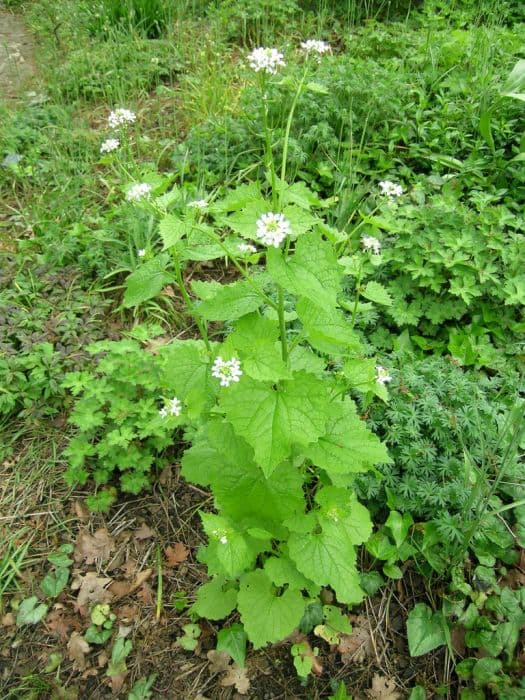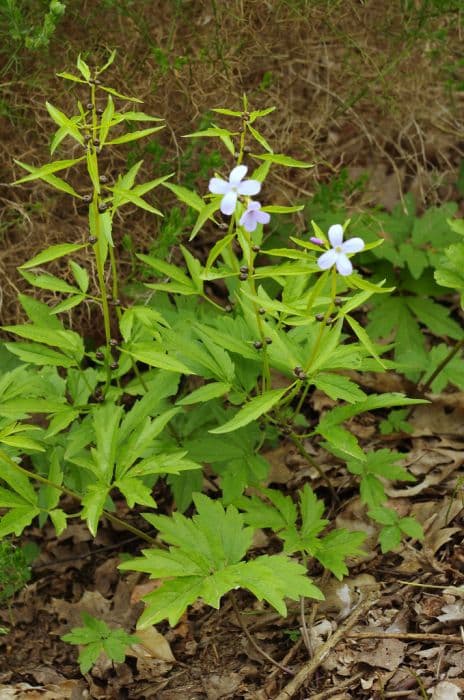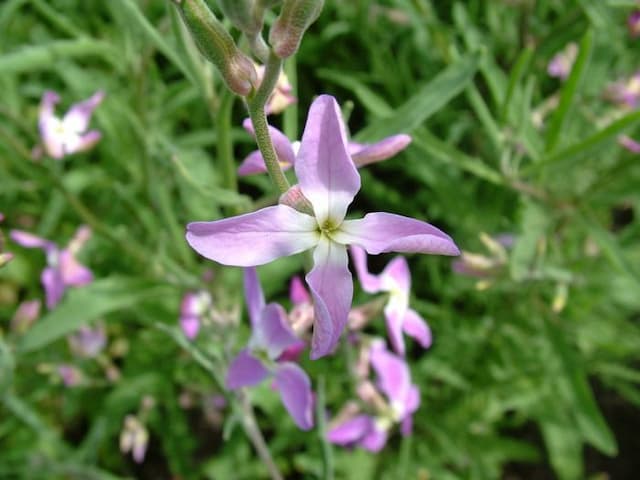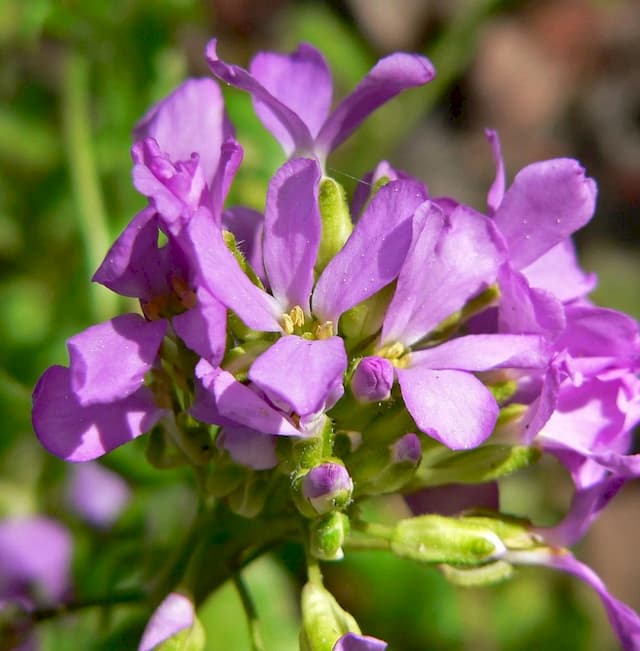Aubrieta 'Red Carpet' Aubrieta 'Red Carpet'

ABOUT
'Red Carpet' is a wide-spreading trailing plant to 10cm tall, with grey-green leaves and bright deep purplish-red flowers in spring
About this plant
 Names
NamesFamily
Brassicaceae
Synonyms
False Rockcress, Purple Rock Cress, Rainbow Rock Cress, Rock Cress
Common names
Aubrieta 'Red Carpet'.
 Characteristics
CharacteristicsLife cycle
Perennials
Foliage type
Evergreen
Color of leaves
Green
Flower color
Purple
Height
6 inches (15 cm)
Spread
24 inches (60 cm)
Plant type
Creeper
Hardiness zones
4
Native area
Mediterranean
Benefits
 General Benefits
General Benefits- Low Maintenance: Aubrieta 'Red Carpet' is easy to care for, requiring minimal watering and pruning once established.
- Drought Tolerant: It can survive in dry conditions, making it ideal for rock gardens and drought-prone regions.
- Ground Cover: Its dense growth habit suppresses weeds and covers bare spots effectively.
- Spring Blooms: It produces vibrant red-purple flowers in the spring, adding a splash of color to the garden.
- Attracts Pollinators: The flowers attract bees and butterflies, which are beneficial for pollination in the garden.
- Erosion Control: Its root system helps stabilize slopes and can be used to prevent soil erosion.
- Cold Hardy: It can withstand cold temperatures, making it suitable for cooler climates.
- Evergreen: In some climates, Aubrieta keeps its leaves year-round, providing continuous ground cover and interest.
- Edging Plant: It can be used to define garden paths and borders with its low, spreading habit.
- Rock Gardens: Ideally suited for rockeries or alpine gardens, where its cascading nature complements stones and rocks.
 Medical Properties
Medical PropertiesThis plant is not used for medical purposes.
 Air-purifying Qualities
Air-purifying QualitiesThis plant is not specifically known for air purifying qualities.
 Other Uses
Other Uses- Aubrieta 'Red Carpet', commonly known as Red Carpet Rock Cress, can be used to create colorful ground cover in miniature or fairy gardens, providing a whimsical landscape for tiny settings.
- This plant's dense growth habit makes it ideal for stabilizing slopes and banks, preventing soil erosion with its mat-forming foliage.
- Red Carpet Rock Cress can be planted in crevices of dry stone walls or walkways, adding splashes of color and life to hardscaping elements.
- Aubrieta 'Red Carpet' works well in container gardens, especially in hanging baskets where its cascade of flowers can be showcased from above.
- It can be used in alpine troughs or rock gardens, replicating its natural mountainous habitat and providing an authentic alpine aesthetic.
- Aubrieta 'Red Carpet' is suitable for rooftop gardens due to its drought tolerance and ability to thrive in shallow soil, adding low-maintenance greenery to urban spaces.
- When planted near fruit or vegetable gardens, it can attract pollinators, supporting the production of crops through increased pollination.
- Its vivid blooms can be used to create a natural dye for fabrics, offering a sustainable alternative to synthetic dyes.
- The plant can be used in educational settings, like school gardens, to teach students about plant growth and ground-covering plants' roles in ecosystems.
- As a part of sensory gardens, Aubrieta 'Red Carpet' provides not only visual appeal but also a subtle, pleasant fragrance that can contribute to a calming environment.
Interesting Facts
 Feng Shui
Feng ShuiThe plant Aubrieta is not used in Feng Shui practice.
 Zodiac Sign Compitability
Zodiac Sign CompitabilityThe plant Aubrieta is not used in astrology practice.
 Plant Symbolism
Plant Symbolism- Determination: Aubrieta, commonly known as Rock Cress, often grows in rocky, inhospitable areas, symbolizing strong will and the determination to thrive in challenging environments.
- Resilience: As a plant that returns each spring, Rock Cress represents an ability to bounce back and recover from adversity.
- Beauty: With its vivid red-purple carpet of flowers, Rock Cress is often associated with natural beauty and the appreciation of simple aesthetic pleasures.
- Survival: Rock Cress' ability to survive with minimal soil and moisture exemplifies survival and an independent spirit.
 Water
WaterThe Purple Rock Cress, commonly known as Aubrieta 'Red Carpet', prefers consistent moisture but doesn't like to be overwatered. Watering should be done when the top inch of soil feels dry to the touch, which may equate to once or twice a week depending on the weather conditions. Aim to give the plants a thorough soak, providing approximately one gallon of water per square yard during each watering session. During the active growing season in the spring, you might need to water more frequently, while in winter, the plant requires less water due to dormant growth.
 Light
LightPurple Rock Cress thrives best in full sun where it can receive at least six hours of direct sunlight each day. The plant will also tolerate partial shade, especially in areas with very hot summers. However, for the best flowering display and compact growth, choose a spot in your garden that is sunny and well-draining.
 Temperature
TemperaturePurple Rock Cress is a hardy perennial that can survive in a wide range of temperatures. It can endure minimum temperatures down to -20 degrees Fahrenheit, making it suitable for USDA hardiness zones 4 through 9. However, it grows ideally in temperate conditions with temperatures ranging between 60 and 75 degrees Fahrenheit during the growing season.
 Pruning
PruningFor Purple Rock Cress, prune to remove dead flowers and to maintain shape after the blooming period in late spring or early summer. Deadheading encourages a second bloom and prevents the plant from getting leggy. Prune again lightly at the end of the growing season if needed, to remove any dead or damaged foliage and to keep the plant tidy.
 Cleaning
CleaningAs needed
 Soil
SoilRock Cress (Aubrieta 'Red Carpet') thrives in well-draining, gritty soil with a neutral to slightly alkaline pH of around 7.0 to 7.5. A soil mix suitable for Rock Cress could be composed of one-third garden soil, one-third coarse sand or perlite, and one-third compost for added nutrients. This combination ensures both adequate drainage and a level of fertility suitable for healthy growth.
 Repotting
RepottingThe Rock Cress (Aubrieta 'Red Carpet') is generally not repotted frequently due to its preference for being undisturbed once planted. It's a ground-covering perennial that is typically planted outdoors, where repotting is not necessary. In container culture, repotting may be done every 2-3 years or when the plant has outgrown its current container.
 Humidity & Misting
Humidity & MistingRock Cress (Aubrieta 'Red Carpet') prefers drier conditions and will thrive in low to moderate humidity environments common in temperate climates. They tolerate a wide range of humidity levels but are susceptible to rot in overly humid conditions. No specific humidity level needs to be maintained for this plant.
 Suitable locations
Suitable locationsIndoor
Provide bright light, well-draining soil, and occasional water.
Outdoor
Plant in full sun, well-drained soil; tolerate poor soils.
Hardiness zone
4-9 USDA
 Life cycle
Life cycleFalse Rockcress 'Red Carpet' is a perennial plant, so its life cycle includes germination, vegetative growth, flowering, seed production, and dormancy. After the seed germinates in late spring or early summer, the plant enters the vegetative stage where it develops a mat-forming habit with small, oval leaves. This stage is followed by the flowering period in mid to late spring, where it showcases a mass of vibrant red-violet flowers. Post-flowering, False Rockcress sets seeds that can be dispersed to produce new plants the following season. As a perennial, it enters a phase of dormancy during the winter, where above-ground growth dies back, and the plant survives through its root system. The cycle begins anew with the return of warmer weather when the plant breaks dormancy and resumes growth.
 Propogation
PropogationPropogation time
Spring to Summer
Aubrieta 'Red Carpet', commonly known as Red Carpet rock cress, is most effectively propagated through seed sowing. The optimal time for sowing seeds of Red Carpet rock cress is in late spring after the last frost has passed, or in autumn. To propagate by seed, one should scatter the seeds over a well-drained soil mix and lightly press them in, but not cover, as they need light to germinate. The flat or tray should then be kept moist and in a bright, indirect light location with a temperature range of 65-70 degrees Fahrenheit (approximately 18-21 degrees Celsius). Seedlings usually emerge in 14-21 days, and once they are large enough to handle, they can be transplanted into individual pots or their final position in the garden. This method allows for a large number of plants to be produced, maintaining the delightful crimson hues and ground-cover habit that make the Red Carpet rock cress a garden favorite.








